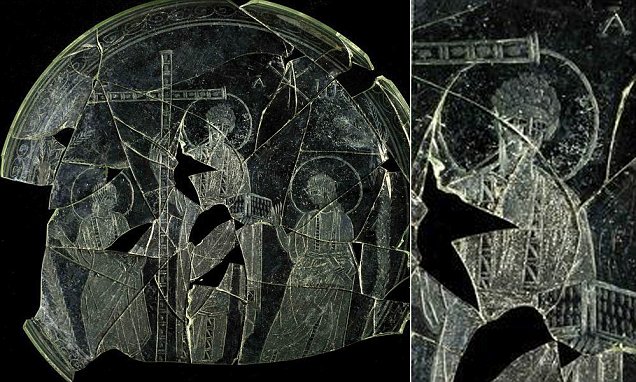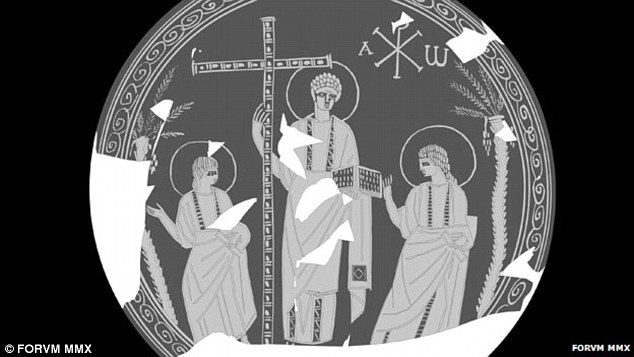
The history of Christianity in Spain may have to be rewritten after the discovery of a glass plate depicting Christ that dates to the fourth century AD.
Christian Spain is thought to have begun in the fifth century with the arrival of the recently Christianised Visigoths from central Europe and Byzantium.
"We were afraid to say what we believed at first, because it forces us to rethink the history of Christian Spain," said Marcelo Castro, an archaeologist involved in the project that unearthed the plate from the ruins of the ancient city of Cástulo in southern Spain.

Comment: It's not at all clear when Constantine ruled because timelines around the collapse of the Roman Empire are messed up, to say the least. In fact, up to four or five hundred years could have been added by the new ruling elites after the Dark Ages. So, this plate could easily date from the time of 'Christ's' life, or very shortly thereafter.
The plate, which is on display in the archaeology museum in Linares in Andalusia, is one of the earliest representations of Christ after his followers emerged from clandestinity.
The plate, 81% of which has been recovered and reassembled, depicts Christ and the apostles Paul and Peter, according to Castro. Unlike later Christian iconography, the men are all clean-shaven and have short hair. They are also wearing togas, in keeping with the Roman influence on early Christian art.
The fact that it is made of glass has led archaeologists to believe the plate was probably manufactured in Ostia, near Rome.



interesting that the depicting of 'jesus' on this glass plate is sooooo similar to the usual caesar's depiction in art...